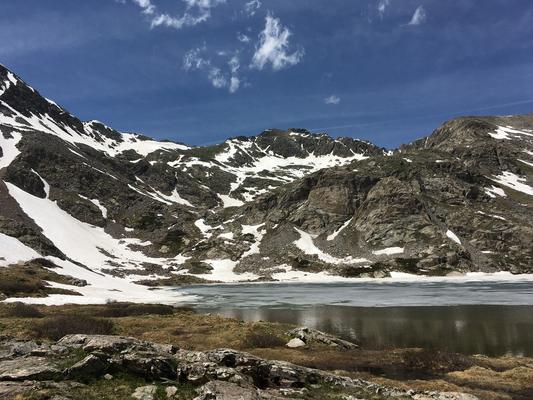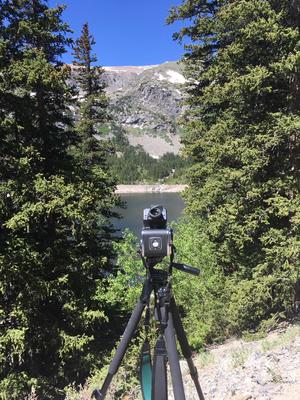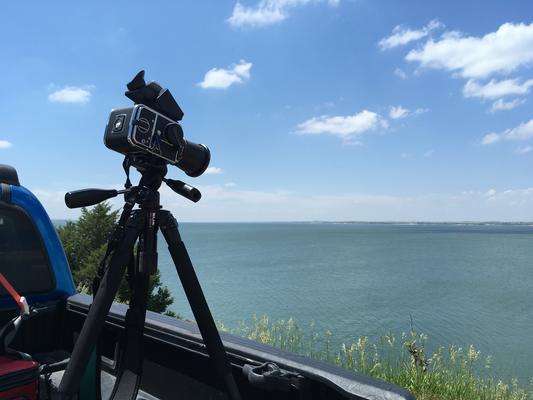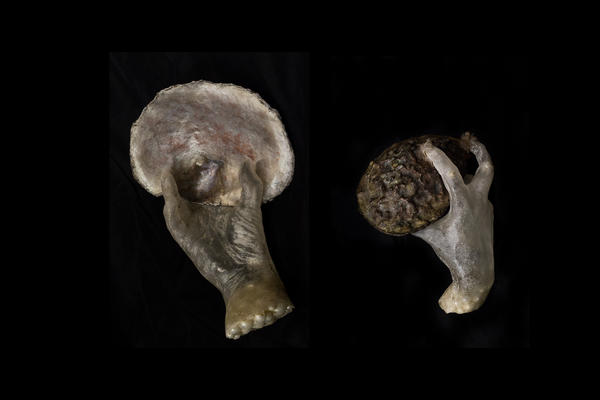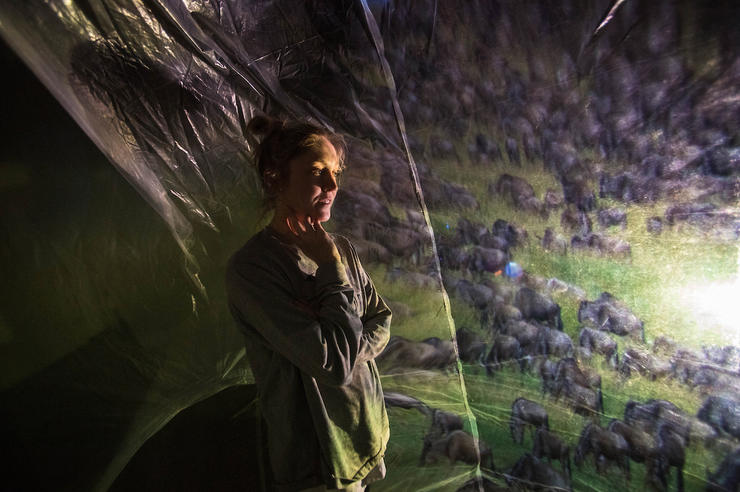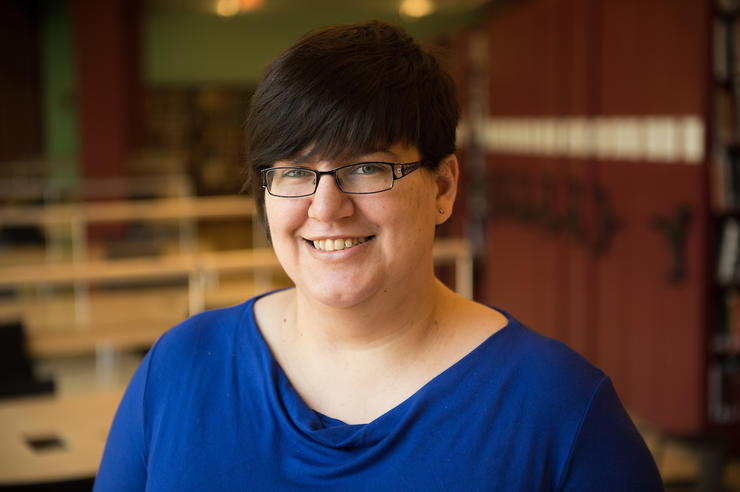The art of chess
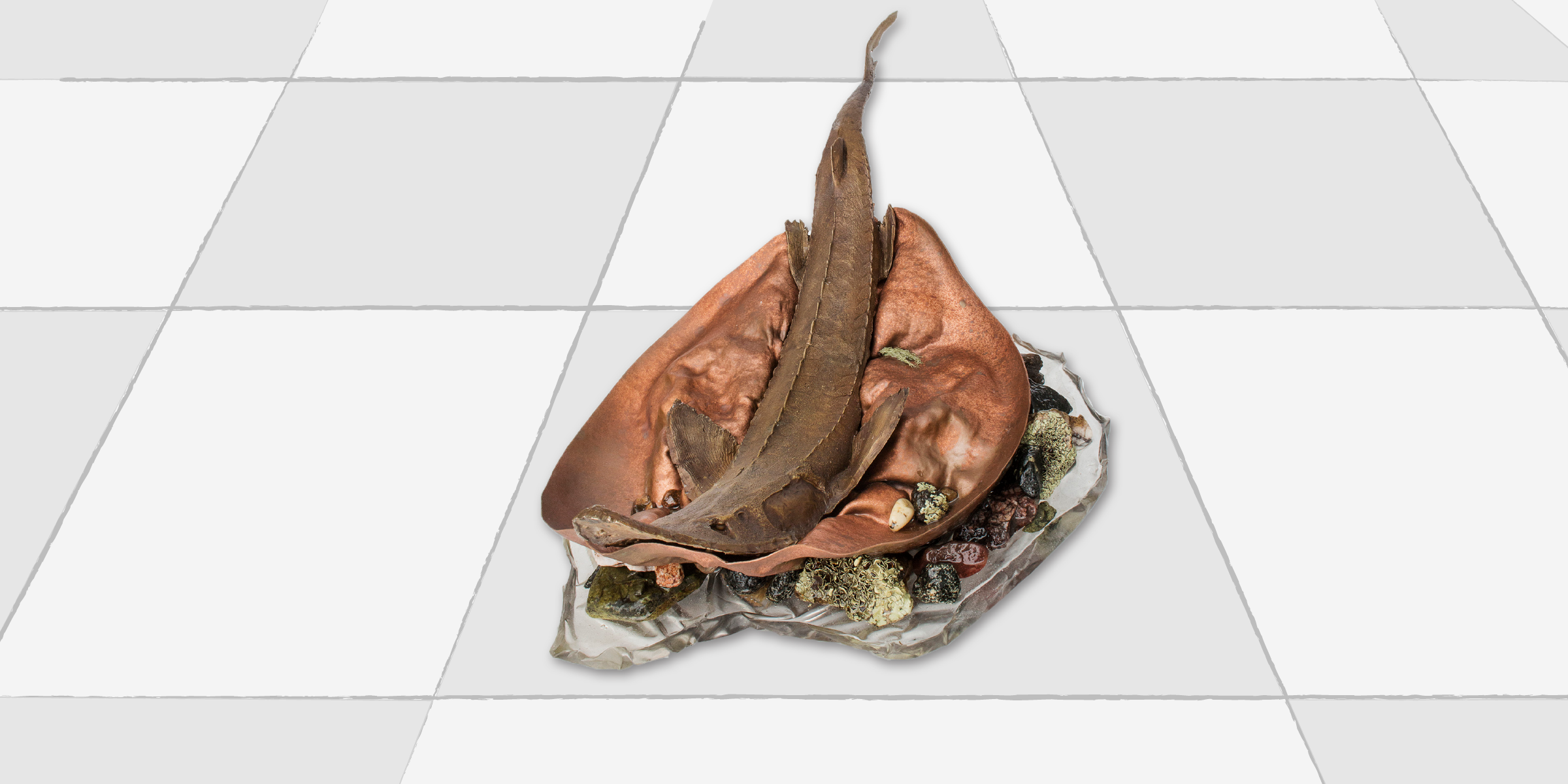
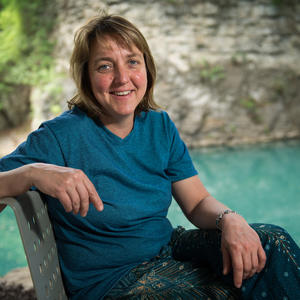
Hometown: West Branch, Iowa
Area of study: MFA candidate in studio art with an emphasis in jewelry and metal arts.
Summer research plans: Spent 10 days traveling along the Platte River from its confluence at the Missouri River to the headwaters of the middle fork of the South Platte at Wheeler Lake, Colorado, to study two birds—the tern and the plover—and the hydrology of the river.
From multilayered boards to pieces that recreate the London skyline or depict characters in pop culture, there has been no shortage of artists’ interpretations of chess sets over the years. Eden Hall, who is working toward an MFA in studio art with an emphasis in jewelry and metal arts at the University of Iowa, is conducting research to put her own ecological spin on the game.
The West Branch, Iowa, native spent 10 days in June traveling along and on the Platte River from its confluence at the Missouri River to the headwaters of the Middle Fork of the South Platte River just below the Continental Divide at Wheeler Lake, Colorado. The goal of the journey was to observe the river and two threatened shorebirds that nest alongside it: the least tern and the piping plover.
This research trip is the latest effort in Hall’s quest to build a unique large-scale chessboard, one in which sculptures of threatened, endangered, or extinct animals make up the pieces and water flows across the board. All of the animals are linked by water, and Hall started with freshwater mussels—her board’s rooks.
“I wanted to focus on some animals that live in the region,” Hall says. “It’s important because this is my home and I live on a river.”
Rounding out her chess pieces are the golden toad (pawns), sturgeon (bishops), blue whale (king), and the whooping crane (queen). What will replace the knights is still up in the air. Hall would have liked to have studied all the animals in person, but a few just weren’t possible. The golden toad, for example, is extinct, and she hopes to one day visit Nova Scotia, Canada, to see blue whales.
“It can be hard to find the line between education, science, and art without being too educational, without being too boring, and without losing your audience. If it’s not somewhat accessible, people don’t know what it is.”
While the least tern and the piping plover won’t make appearances on the chess board, they piqued Hall’s interest in hydrology.
The Platte River traditionally has two floods, one from localized snowmelt and one from snowmelt from the Rocky Mountains. The two shorebirds rely on these water surges to clean out the sandbars so predators can’t use vegetation to sneak up on the nests the birds build in the sand. Now that dams more closely control the flow of the river, the floods are not occurring as they used to or are happening later and wiping out the nests.
“This trip became more about the study of water flow, water rights, and balancing agriculture with endangered species,” Hall says. “The birds lured me in, but it rapidly became more about the water than the birds. In all my research projects, I’ve discovered so many additional stories.”
Steve McGuire, professor of metal arts and 3-D design and director of the UI School of Art and Art History, says one can never anticipate when and where a discovery might occur while conducting research.
“In the same way you create new knowledge in science and engineering, you’re doing the same thing in art,” McGuire says. “It’s critical that artists go out and investigate and do new things, because that’s the way their ideas evolve and become more than they otherwise would.”
Along with the chessboard, Hall is creating artwork that addresses the supplementary topics and issues she comes across. From her most recent trip, she plans to create an installation related to the nesting of the tern and plover. She hopes viewers can appreciate the art while also learning more about the world they live in.
“It can be hard to find the line between education, science, and art without being too educational, without being too boring, and without losing your audience,” Hall says. “If it’s not somewhat accessible, people don’t know what it is. There’s a fine line, because you can never walk away from making art for art’s sake.”
Hall says she would like to further explore some of these ideas in the future.
“These may become prototypes,” she says.
Unfortunately, in June the Platte River was swollen and the sandbars uninhabitable, so Hall didn’t see the least tern and piping plover. Still, she says the trip was more incredible than she anticipated.
“I had so many eye-openers about this river: accessibility to water, priorities, privilege, vulnerability, history, and Americans in general,” Hall says. “On the natural side of things, I learned about water quality, flow, vegetation, wildlife, and basically how this river continues to naturally evolve even at the hands of manmade hydrology. The volume of water truly amazed me. What started out as a trickle coming out of a snow bank became a massive lake and 400 miles of water.”
Hall says her current task is designing the board, which will be a freestanding table about 4-feet-by-4-feet and 2.5 feet tall made out of bronze, steel, wood, and resin.
“I’m playing with pumps and figuring out the logistics,” Hall says. “I’m trying to use solar power, so right now it’s a lot of technical stuff. When I put it all together, it will be more than a chess board.”
University of Iowa art students travel the world in pursuit of discovery.
